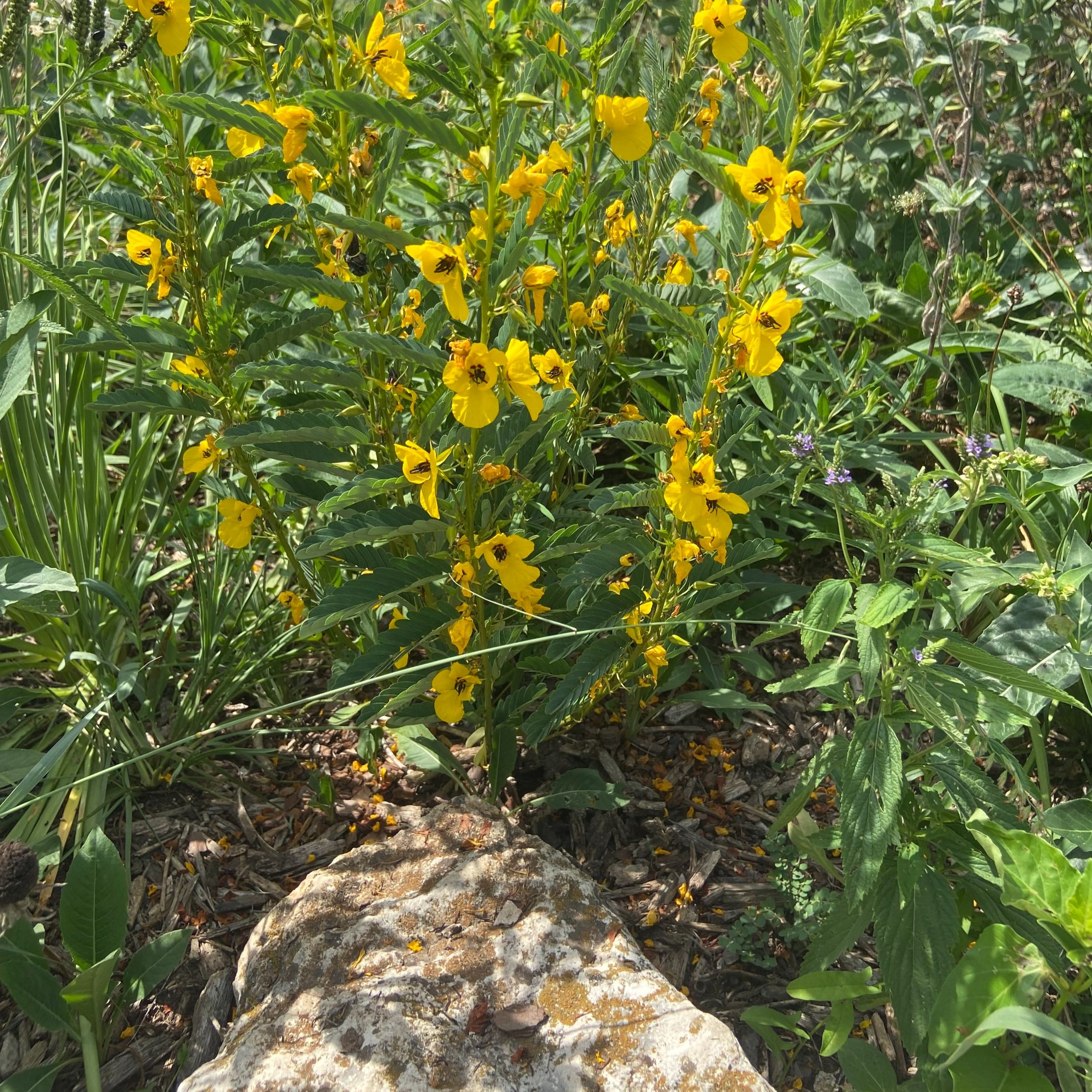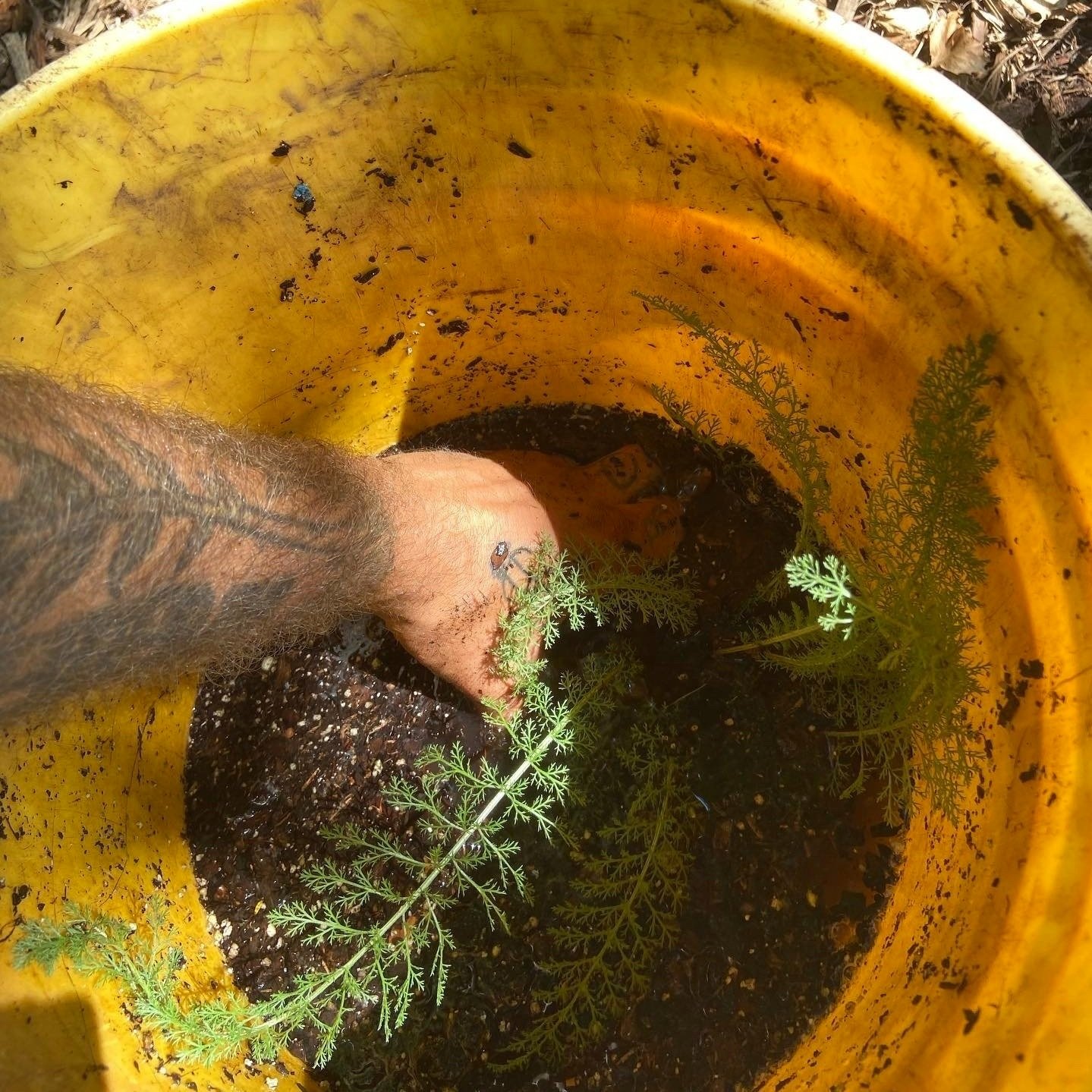
Planting Native Plants:
Preparation
Before starting a new planting we find it is best to layout all the plants in your design first. This will allow you to make adjustments to spacing or the layout as needed. Designs on paper always seem to need slight changes once they are actually laid out in a physical space. Once we have placed our plants, we fill up buckets of water and add some sort of liquid plant food to the bucket (natural root stimulators, bio-stimulants, Fish & Seaweed emulsions, or compost teas) are all good options. Be sure to use something that encourages rooting and helps prevent transplant shock. We then prepare our soil amendments/fertilizers in a small container or granular shaker. Our mixture consist of Mycobloom which is a mix of arbuscular mycorrhizal fungi, an organic starter fertilizer (we us Sustane 4-6-4) , and lastly we add Biochar which helps retain moisture and nutrients close to the root mass of the new plants. Using this amount of inputs is absolutely not a requirement to have a healthy native planting. Plenty of projects have been done with just shovels and water. This is what we use to give the plants the best start possible.
Planting
When planting, soak each plant in the bucket of water/liquid plant food. Next, dig a hole as deep as the pot and a little bit wider. Make sure the walls of the hole aren’t to smooth and compacted. If they are, we scratch up the walls to make them rough. This makes it easier for new roots to stretch out into the soil. Next remove the plant from its pot and gently loosen up the root mass. Sprinkle a bit of mycobloom/fertilizer mixture in the hole and around the roots.
Now it is time to place the plant in the hole. When planting, a good rule is that it’s better to be to shallow than too deep. Pay attention to where the potting soil meets the stem of the plant and try to keep it at the same height as the top of your hole. Make sure to not put to much soil or mulch up around the collar of the plant. Sometimes in areas with heavy clay or hard soils, we find it can be difficult to refill the holes without leaving big air gaps, so we keep a bag or bucket of topsoil or compost on hand to mix with the existing soil. Gently press down on the soil around the plant to remove air pockets, but be sure to be gentle enough that you do not compress the soil or the roots. Once the plant is planted, water the plant in gently. Water the plants every day for 3 or 4 days and 3 times a week for the second and third week in order to help them establish.






